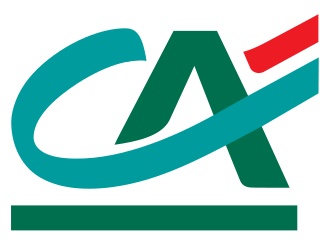
Crédit Agricole Group, sometimes called La banque verte, is a French international banking group and the world's largest cooperative financial institution. It is the second largest bank in France, after BNP Paribas, as well as the third largest in Europe and tenth largest in the world. It consists of a network of Crédit Agricole local banks, 39 Agricole regional banks and a central institute, the Crédit Agricole S.A.. It is listed through Crédit Agricole S.A., as an intermediate holding company, on Euronext Paris' first market and is part of the CAC 40 stock market index. Local banks of the group owned the regional banks, in turn the regional banks majority owned the S.A. via a holding company, in turn the S.A. owned part of the subsidiaries of the group, such as LCL, the Italian network and the CIB unit. It is considered to be a systemically important bank by the Financial Stability Board.
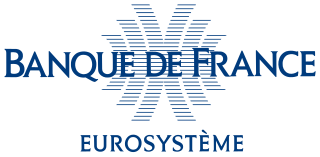
The Bank of France is the French member of the Eurosystem. It was established by Napoleon Bonaparte in 1800 as a private-sector corporation with unique public status. It was granted note-issuance monopoly in Paris in 1803 and in the entire country in 1848, issuing the French franc. Charles de Gaulle's government nationalized the bank in 1945 after several governance changes in the meantime. It remained France's sole monetary authority until end-1998, when France adopted the euro as its currency.

A savings bank is a financial institution that is not run on a profit-maximizing basis, and whose original or primary purpose is collecting deposits on savings accounts that are invested on a low-risk basis and receive interest. Savings banks have mostly existed as a separate category in Europe.

Dexia N.V./S.A., or the Dexia Group, is a Franco-Belgian financial institution formed in 1996. At its peak in 2010, it had about 35,200 members of staff and a core shareholders' equity of €19.2 billion.

HSBC Continental Europe, known until December 2020 as HSBC France SA, is a subsidiary of HSBC, headquartered in Paris.
Crédit du Nord was a French retail banking network. It consisted of the following banks:

CNP Assurances S.A. is a major French insurance corporation. CNP stands for Caisse Nationale de Prévoyance. It is listed on the Fortune Global 500. The company was formed in 1959 as a subsidiary of Caisse des dépôts et consignations, which held approximately 40% of the company. Agence des participations de l'État also owned 1.1% for the French State. Since 2022, it has been wholly owned by La Banque Postale.

Banque Cantonale de Genève (BCGE) is a limited company established under Swiss public law, resulting from the merger of the Caisse d'Épargne de la République et Canton de Genève and the Banque Hypothécaire du Canton de Genève. It is one of the 24 cantonal banks.

Banque Populaire was a French group of cooperative banks, with origins in the European cooperative movement. In 2009, it merged with Groupe Caisse d'Épargne to form Groupe BPCE.

Groupe Caisse d'épargne was a group of French savings banks that were converted into cooperative banks by legislation enacted in 1999. Its roots went back to the founding in 1818 of the Caisse d'Épargne et de Prévoyance de Paris, initiated by Benjamin Delessert and the Duke of La Rochefoucauld-Liancourt.

LCL S.A. is a major French banking network that is part of the Crédit Agricole group, with registered office in Lyon and administrative head office in Paris, France. It was established in 2005 from its predecessor the Crédit Lyonnais, and its name LCL refers to "Le Crédit Lyonnais". As of 2005, it served about 6 million customers in 2000 branches in France.
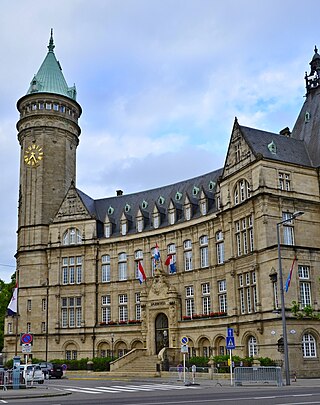
The State Bank and Savings Bank, also known by its Luxembourgish name Spuerkeess, is the leading national financial institution founded in 1856 and governed by the law of 24 March 1989. Spuerkeess is a commercial bank wholly owned by the government of Luxembourg.

The Caisse des dépôts et consignations is an idiosyncratic French public financial institution created in 1816, often referred to as the investment arm of the French State. It is defined in the French Monetary and Financial Code as a "public group serving the public interest" and a "long-term investor". Its governance framework places it under the control of the Parliament.
The Autorité des marchés financiers is a self-funding government agency responsible for financial regulation in the Canadian province of Quebec. It regulates the province's financial markets and provides assistance to consumers of financial products and services. As provided for under its incorporating legislation, the AMF's mission is to enforce the laws governing the regulation of the financial sector, notably in the areas of insurance, securities, deposit institutions and the distribution of financial products and services.

Groupe BPCE is a major French banking group formed by the 2009 merger of two major retail banking groups, Groupe Caisse d'Épargne and Groupe Banque Populaire. As of 2021, it was France's fourth largest bank, the seventh largest in Europe, and the nineteenth in the world by total assets. It has more than 8,200 branches nationwide under their respective brand names serving nearly 150 million customers. Its wholesale banking subsidiary Natixis, previously a separately listed company, was delisted and came under full ownership of Groupe BPCE in 2021.

Crédit Mutuel is a French cooperative banking group, one of the country's top five banks with over 30 million customers. It traces its origins back to the German cooperative movement inspired by Friedrich Wilhelm Raiffeisen in Alsace–Lorraine under German rule, in the 1880s. Crédit Mutuel was a member of the International Raiffeisen Union (IRU).
In 2010, the French government's Autorité de la concurrence fined eleven banks €384.9 million for colluding to charge unjustified fees for check processing, especially for extra fees charged during the transition from paper check transfer to "Exchanges Check-Image" electronic transfer.
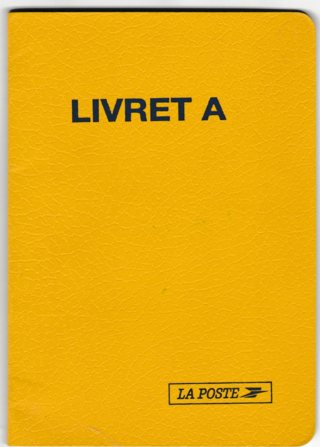
The Livret A is a financial product offered by French banks. Established in 1818 by King Louis XVIII to pay back the debts incurred during the Napoleonic Wars, part of the funds are now transferred to and re-invested by the Caisse des dépôts et consignations, owned by the French state, to build HLM, or social housing, and pay back the Eurozone debt. The remaining funds are used by banks to give loans to French small and medium-sized enterprises. The product acts as a savings account for French citizens and residents, and the annual returns are not taxed. In June 2023, it was owned by 55 million individuals, for a total amount of 401.3 billion euros.

The Algemene Spaar- en Lijfrentekas / Caisse générale d'épargne et de retraite was a major Belgian public bank, originally created in 1850 as a pension institution. It was acquired in stages between 1993 and 1998 by Fortis Group. In 1999 Fortis merged it with Générale de Banque and other operations to form Fortis Bank, which in turn was integrated from 2009 into BNP Paribas.
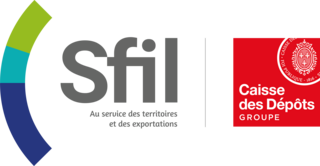
SFIL, known until 2015 as Société de Financement Local, is a French public credit institution spun off in February 2013 from the publicly rescued Dexia. SFIL operates in local public sector financing and large export credit contracts refinancing, in commercial partnership with publicly owned bank La Banque Postale (LBP). Since 2020 it has been fully owned by Caisse des Dépôts et Consignations (CDC), France's major public financial institution, but for a single share still held by the French state.


















